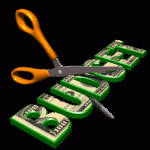Health Insurance has certainly been a hot button for many Americans in recent months. Premiums continue to climb and so many questions remain unanswered regarding the recently passed health care reform—the effects of which may not be seen for years to come.
This week, we’d like to identify some of the most common mistakes, oversights and/or misconceptions that we have observed with our individual and small business clients—items that, when not corrected, can end up costing policy holders a lot more than just a few dollars.
#5. Splitting Coverage

With the increase in dual income households, many consumers don’t take the time to research how their dependents will be covered under each of their employer plans. If both spouses work, consideration must be given to who is insured through which plan. Often times, we find that families choose to have their dependents covered under the benefits plan of the higher paid spouse, which is about as dependable a method as flipping a coin. As financial planners, we urge individuals to take the time to research and evaluate each plan, selecting the one that will suit each member of your family, which could mean splitting coverage. You could be costing your family hundreds of dollars per month by having all your coverage with the same carrier.
#4. Don’t put too much focus on the Deductible

Like the number of cup holders in a new car, the deductible often gets all the attention when comparing plan options, when statistically, this is the least likely benefit to be utilized every year. Lowering your deductible to levels where you feel “comfortable” can often inflate your premium substantially. Consider that the probability of meeting your annual deductible is actually less than 20%. While the deductible is certainly one important factor, the key to remember is health insurance is designed to protect you from catastrophic loss. Adding $500 or even $1000 to your deductible will seem a small price to pay in the event of a true medical emergency.
Attention must also be given to your level of coinsurance, which applies once the deductible is met. It is a percentage of balances due above the deductible (90/10, 80/20, 70/30). If the coinsurance is 80%, you will have to pay 20% of the remaining balance. Your coinsurance will have a maximum that you will be required to pay, in most cases, called the stop loss.
Example of Deductible and Coinsurance:
Your plan- $2,000 deductible; 70/30 Coinsurance; $2,000 stop loss
Major Medical Claim of $10,000
You Pay- $2,000 for your deductible (remaining balance $8,000)
30% of $8,000= $2,400 (you pay $2,000 of that balance due to stop loss)
**Be sure to carefully weigh these options and don’t be afraid to increase your exposure to reap some favorable premium savings
#3. Drug Benefits- Check the formulary

Most every plan out there offers some benefits for prescriptions. We recommend that individuals take note of how their specific insurance plans covers the following three forms of prescription medications, and speak with your physician with each new prescription to ensure that you are prescribed the most cost effective treatment available:
- Generic- Covers all generic drugs and offers the lowest “co-pay” amount
o Always inquire with your doctor if a generic version exists for your medication
- Brand Formulary- These are branded drugs that have been approved for distribution on the insurance companies list (ask your insurance company for a copy). Filling a prescription with Brand drugs will cost you more money than generics.
o Brand Formulary lists are different with every insurance company. If you’re taking brand drugs, be sure they are listed on the formulary at the insurance carrier. If not, you need to ask for one that is.
- Non-Formulary Drugs- These are typically drugs new to the market. They will cost you 3-4 times more than generics and typically 2-3 times more than Brand name.
o Careful consideration should be practiced when electing to use a non-formulary drug. Be sure to discuss this with your physician.
#2. Co-pays drive rates

The days of a $10 or $20 co-pay are going the way of the Dodo Bird. Choosing a plan with a slightly higher co-pay can often save you 10-15% in premium. If your household premium is $500/month, you’ll end up spending up to $600 more per year to save a few dollars IF you go to the doctor.
- A good rule to live by is that a premium dollar is spent money!
Example: Go from a $20 co-pay plan to a $40 co-pay plan saves you $400 in premium. You would have to make 21 trips to the doctor in a year before you used up your savings.
#1. Know your Network!
Whether you have an HMO, POS or PPO, you have a network of doctors. I’ll grant you that the PPO will offer benefits for ‘out of network’ claims. However, the price is usually substantially higher than staying in the network. Tread cautiously when doing your research on who is in network and who is out. In some cases, a doctor can be in the network but the particular facility he is in that day is not. When you get a referral to a specialist, don’t take your doctor’s word that the referral is in network. Check and double check. Most carriers offer online portals to see who is in network. Follow that up with a phone call to the physician. Even triple check when you go in for your appointment.

This mistake can cost you hundreds, if not thousands, of dollars when it comes time for insurance to pay the bill.

































